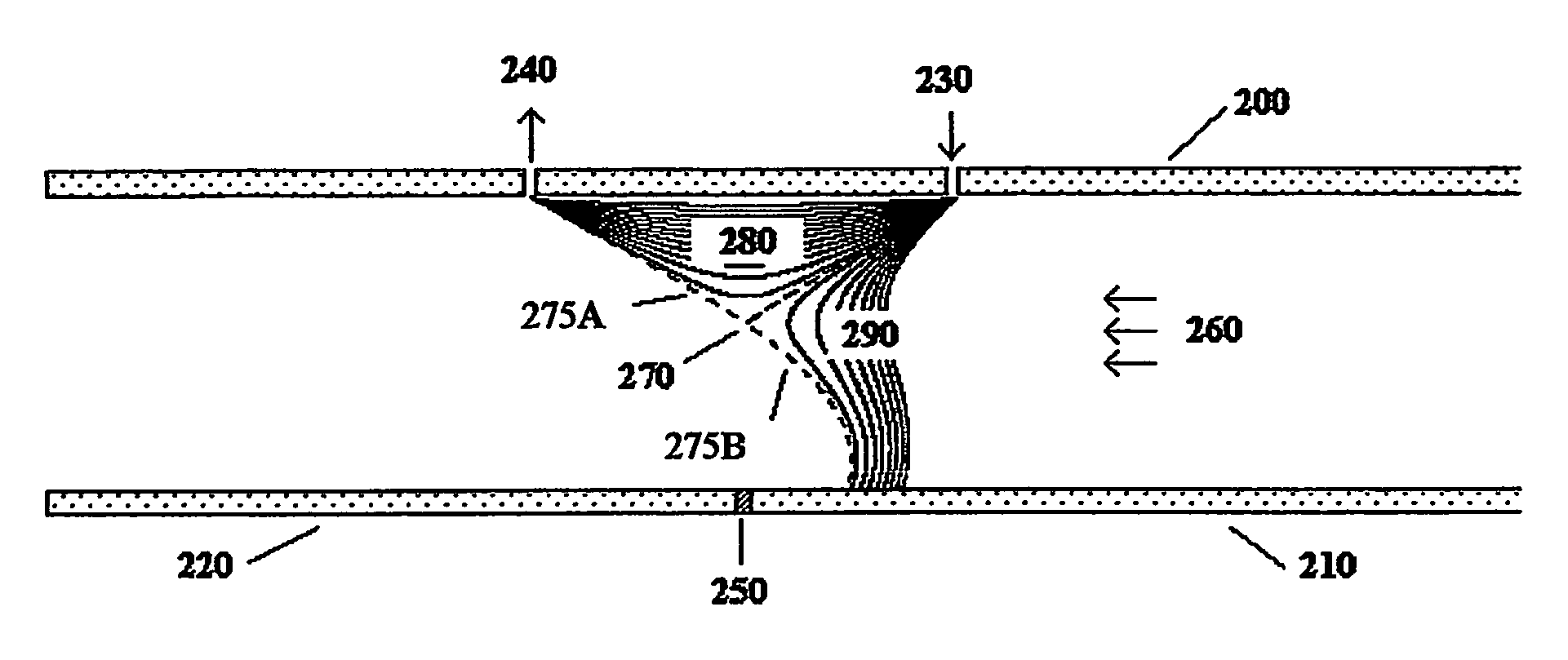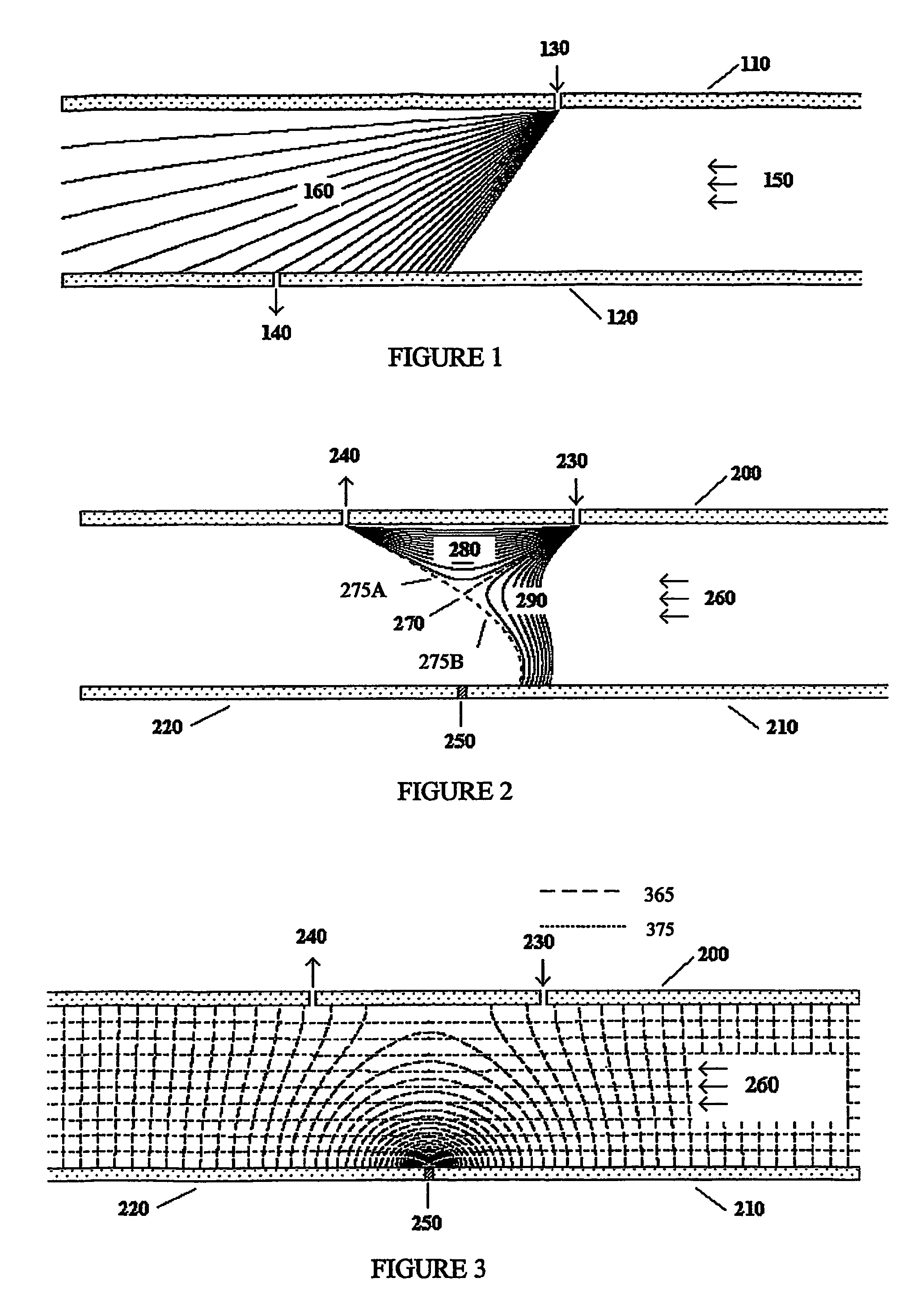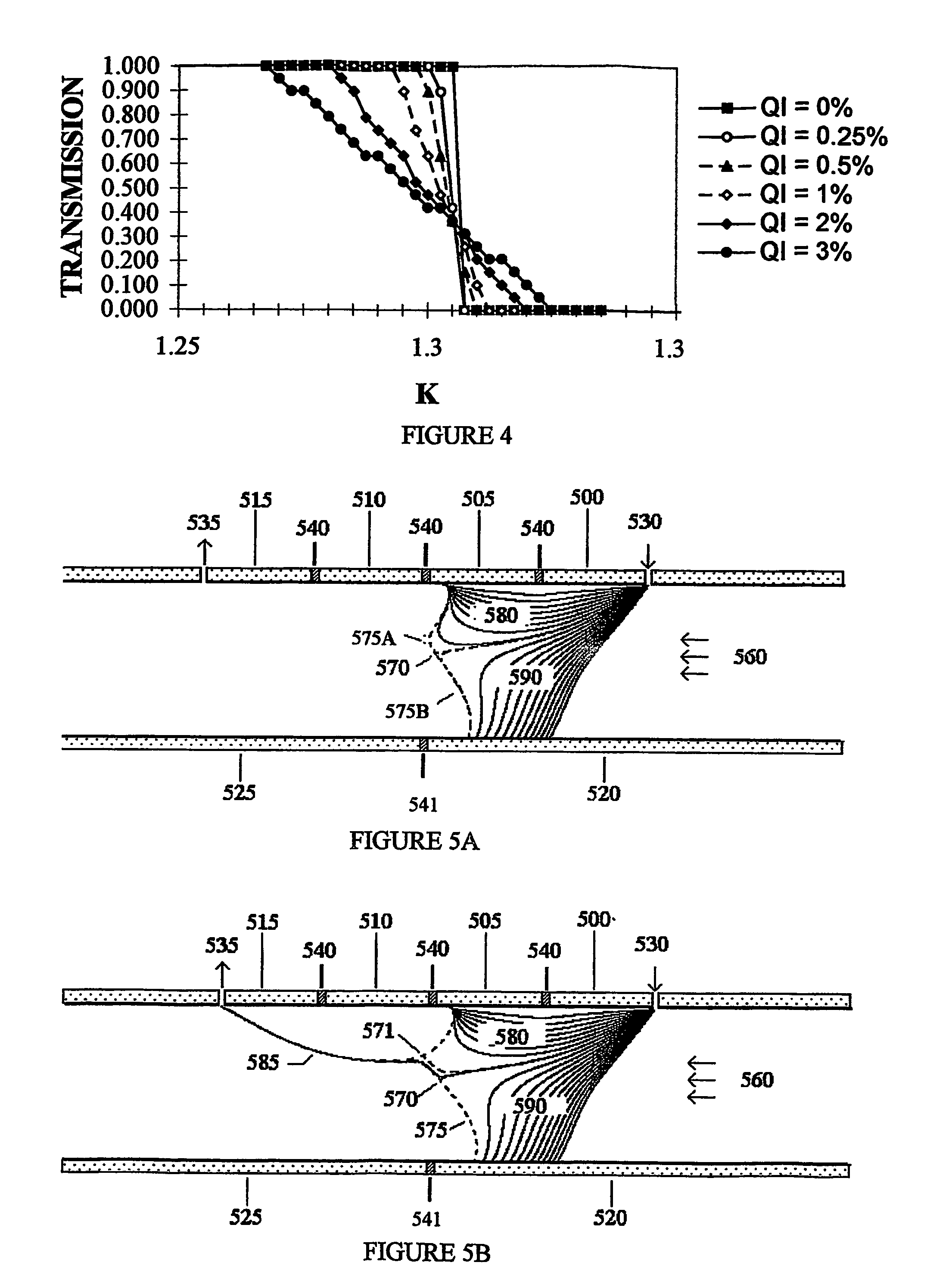Ion mobility separation devices
a technology of mobility separation and separation device, which is applied in the direction of separation process, particle separator tube details, instruments, etc., can solve the problems of complicated aerodynamic flow, limited maximum sheath gas flow rate, and working device based on loscertales principles,
- Summary
- Abstract
- Description
- Claims
- Application Information
AI Technical Summary
Benefits of technology
Problems solved by technology
Method used
Image
Examples
Embodiment Construction
Three Element Devices
[0041]The present invention has many possible embodiments. The purpose of the following sections is to show a few of these embodiments which demonstrate how specially configured elements can be used to obtained the desired characteristics. Others embodiments should be obvious to those skilled in the art. FIG. 2 shows one embodiment of the current invention. The device shown is similar to the one shown in FIG. 1. It has a top plate (200) and a parallel bottom plate. In contrast to FIG. 1, the bottom “plate” has two elements (210,220). There is a voltage difference between the bottom left (220) and bottom right elements (210). A “junction” (250) separates the bottom left (220) and bottom right (210) elements and enables these elements to be at different voltages. To be considered a junction, the junction must be sufficiently near the analyzing region so the strong electrical fields near the junction affect the trajectories of the ions in the analyzing region. Phys...
PUM
| Property | Measurement | Unit |
|---|---|---|
| Reynolds number | aaaaa | aaaaa |
| angles | aaaaa | aaaaa |
| angle | aaaaa | aaaaa |
Abstract
Description
Claims
Application Information
 Login to View More
Login to View More - R&D
- Intellectual Property
- Life Sciences
- Materials
- Tech Scout
- Unparalleled Data Quality
- Higher Quality Content
- 60% Fewer Hallucinations
Browse by: Latest US Patents, China's latest patents, Technical Efficacy Thesaurus, Application Domain, Technology Topic, Popular Technical Reports.
© 2025 PatSnap. All rights reserved.Legal|Privacy policy|Modern Slavery Act Transparency Statement|Sitemap|About US| Contact US: help@patsnap.com



